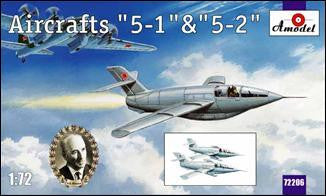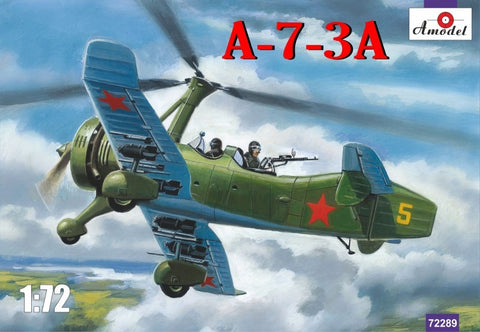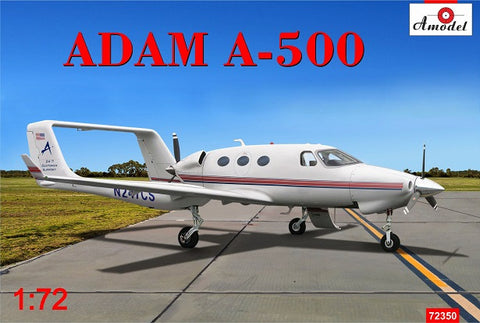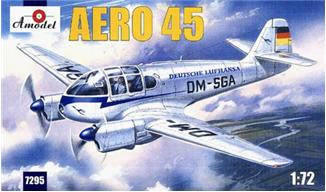
Unimodel Military 1/72 M4 Sherman (105) HVSS Med Tank Kit
This Product Usually Ships In 2-3 Business Days
UNM-375The M4 Sherman, officially the Medium Tank, M4, was the primary battle tank used by the United States and the other Western Allies in World War II, and proved to be a reliable and highly mobile workhorse, despite being outmatched by heavier German tanks late in the war. Thousands were distributed to the Allies, including the British Commonwealth and the Soviet Union, in lend-lease program. The M4 was the second most produced tank of the World War II era, after the Soviet T-34, and its performance and role in its parent nation's victory was comparable to that of the T-34. The tank is commonly known as the M4 Sherman, named after the American Civil War General William Tecumseh Sherman.
The M4 Sherman evolved from the M3 Medium Tank (a.k.a. Grant and Lee), which had an unusual side-sponson mounted 75 mm gun. It retained much of the previous mechanical design, but added the first American main 75 mm gun mounted on a fully traversing turret, with a gyro stabilizer enabling the crew to fire with reasonable accuracy while the tank was on the move. The designers stressed mechanical reliability, ease of production and maintenance, durability, standardization of parts and ammunition in a limited number of variants, and moderate size and weight. These factors made the M4 superior in some regards to the earlier German light and medium tanks of 1939–41. The M4 ended up being produced in large numbers, and formed the backbone of most offensives by the Western Allies, starting in late 1942. Independent tank destroyer(TD) battalions, including the M36 tank destroyer using vehicles built on the M4 hull and chassis, but with open-topped turrets and more lethal, high-velocity guns, also entered widespread use among American army corps. By 1944, the M4 Sherman and the TD units proved to be outmatched by the 45 ton Panther tank, and wholly inadequate against the 56 ton Tiger I and later 70 ton Tiger II heavy tanks, suffering high casualties against their heavier armor and more powerful 88 mm L/56 and L/71 cannons. Mobility, mechanical reliability and sheer numbers, supported by growing superiority in supporting fighter-bombers and artillery, helped offset these disadvantages strategically.
The relative ease of production allowed huge numbers of the M4 to be produced, and significant investment in tank recovery and repair units paid off with more disabled vehicles being repaired and returned to service. These factors combined to enable the Americans numerical superiority in most battles, and allow many infantry divisions their own M4 and TD assets. By 1944 a typical U.S. infantry division had as semi-permanently attached units an M4 Sherman battalion, a TD battalion, or both. By this stage of the war, German Panzer divisions were rarely at full strength, and some U.S. infantry divisions had more fully tracked armored fighting vehicles than the depleted German Panzer divisions did, providing a great advantage for the Americans.The Americans also started to introduce the M4A3E8 variant, with Horizontal Volute Spring Suspension and an improved high-velocity 76 mm gun previously used only by TDs.
Production of the M4 Sherman was favored by the commander of the Armored Ground Forces, albeit controversially, over the heavier M26 Pershing, which resulted in the latter being deployed too late to play any significant role in the war. In the Pacific Theater, the M4 was used chiefly against Japanese infantry and fortifications; in its rare encounters with much lighter Japanese tanks with weaker armor and guns, the Sherman's superiority was overwhelming. Almost 50,000 vehicles were produced, and its chassis also served as the basis for numerous other armored vehicles such as tank destroyers, tank retrievers, and self-propelled artillery.
The Sherman would finally give way to post-war tanks developed from the M26. Various original and updated versions of the Sherman, with improved weapons and other equipment, would continue to see combat effectively in many later conflicts, including the Korean War, Arab-Israeli Wars, and the Indo-Pakistani War of 1965 (where it was used by both sides) into the late 20th century.
The M4 Sherman evolved from the M3 Medium Tank (a.k.a. Grant and Lee), which had an unusual side-sponson mounted 75 mm gun. It retained much of the previous mechanical design, but added the first American main 75 mm gun mounted on a fully traversing turret, with a gyro stabilizer enabling the crew to fire with reasonable accuracy while the tank was on the move. The designers stressed mechanical reliability, ease of production and maintenance, durability, standardization of parts and ammunition in a limited number of variants, and moderate size and weight. These factors made the M4 superior in some regards to the earlier German light and medium tanks of 1939–41. The M4 ended up being produced in large numbers, and formed the backbone of most offensives by the Western Allies, starting in late 1942. Independent tank destroyer(TD) battalions, including the M36 tank destroyer using vehicles built on the M4 hull and chassis, but with open-topped turrets and more lethal, high-velocity guns, also entered widespread use among American army corps. By 1944, the M4 Sherman and the TD units proved to be outmatched by the 45 ton Panther tank, and wholly inadequate against the 56 ton Tiger I and later 70 ton Tiger II heavy tanks, suffering high casualties against their heavier armor and more powerful 88 mm L/56 and L/71 cannons. Mobility, mechanical reliability and sheer numbers, supported by growing superiority in supporting fighter-bombers and artillery, helped offset these disadvantages strategically.
The relative ease of production allowed huge numbers of the M4 to be produced, and significant investment in tank recovery and repair units paid off with more disabled vehicles being repaired and returned to service. These factors combined to enable the Americans numerical superiority in most battles, and allow many infantry divisions their own M4 and TD assets. By 1944 a typical U.S. infantry division had as semi-permanently attached units an M4 Sherman battalion, a TD battalion, or both. By this stage of the war, German Panzer divisions were rarely at full strength, and some U.S. infantry divisions had more fully tracked armored fighting vehicles than the depleted German Panzer divisions did, providing a great advantage for the Americans.The Americans also started to introduce the M4A3E8 variant, with Horizontal Volute Spring Suspension and an improved high-velocity 76 mm gun previously used only by TDs.
Production of the M4 Sherman was favored by the commander of the Armored Ground Forces, albeit controversially, over the heavier M26 Pershing, which resulted in the latter being deployed too late to play any significant role in the war. In the Pacific Theater, the M4 was used chiefly against Japanese infantry and fortifications; in its rare encounters with much lighter Japanese tanks with weaker armor and guns, the Sherman's superiority was overwhelming. Almost 50,000 vehicles were produced, and its chassis also served as the basis for numerous other armored vehicles such as tank destroyers, tank retrievers, and self-propelled artillery.
The Sherman would finally give way to post-war tanks developed from the M26. Various original and updated versions of the Sherman, with improved weapons and other equipment, would continue to see combat effectively in many later conflicts, including the Korean War, Arab-Israeli Wars, and the Indo-Pakistani War of 1965 (where it was used by both sides) into the late 20th century.
- Detailed exterior, separately molded hatches, highly detailed suspension with link-and-length track
- Decals/painting guide for 1 US Army tank of the 750th Armored Battalion, Belgium 1944.






